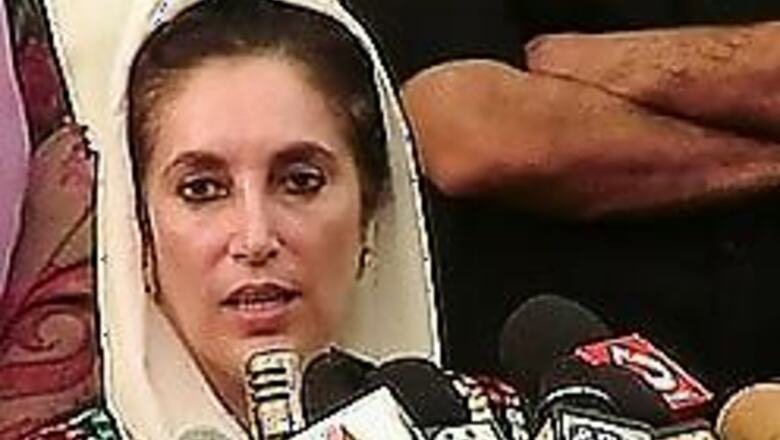
views
In July 1972, Shimla, the summer capital of the British Raj and a tourist paradise after Independence, had few tourists. The reason was that the resort had top officials of India and Pakistan arriving in droves to prepare for a summit meeting between Prime minister Indira Gandhi and Pakistani premier Zulfikar Ali Bhutto.
The atmosphere was tense in the Pakistani camp because around 90,000 prisoners were in Indian hands whom Bhutto had vowed to get released. Representatives of the media from both India and Pakistan animatedly discussed the different outcomes that could emerge from the summit.
Bhutto arrived for the talks impeccably dressed. He seemed pensive and lost in thought. He was accompanied by a sprightly and charming 19-year-old girl. She was the Oxford educated Benazir Bhutto.
Overnight, she became the cynosure of all eyes. The media of both sides unable to get much news, tailed her wherever she went.
Benazir, who 16 years later was destined to become Pakistan's first woman prime minister, wore bell-bottoms and floral shirts and won over millions of Indian hearts. To queries from the media, her stock reply was she was just accompanying her father and nothing more.
But Benazir actively participated in the summit, according to leading Pakistani journalists. They used to say that Benazir was privy to most of the high level meetings on the Pakistani side.
Benazir became a rage. This correspondent who was part of the team that covered the summit for a national news agency saw Benazir literally mobbed wherever she went.
Young boys and girls jostled to have a glimpse of her. Shopkeepers were elated when she visited them. She also visited the Convent of Jesus and Mary School to meet the nuns who had taught her at Murree in Pakistan.
Those were not the days of electronic media. But many newspapers, both foreign and India, deputed correspondents and journalists to cover Benazir extensively. Newsmen vied with each other to get that extra bit of exclusive about Benazir. In fact what Benazir did became newsy stuff in the absence of any credible progress in the summit.
One evening, Indira Gandhi suddenly appeared on the Mall Road and joined Benazir, who was also strolling there. This sent the security men into a tizzy. Newsmen who covered the incident said that they saw panic writ large on their faces. Both Indira Gandhi and Benazir mingled freely with the people.
India's then external affairs minister Swaran Singh also found time from busy meetings to stroll along with Benazir on the Mall. Photographers clicked away relentlessly as the two walked away smiling and talking to each other.
Her friendly demeanour, her simplicity had a lasting impression on any one who saw her, whether it was someone walking on the Mall or had a brief glimpse of Benazir shopping. Her easy repartee with the scribes made her an extremely popular figure in Shimla.
In fact, it would not be inappropriate to say that she took Shimla by storm.
The outcome of the summit may have lost its importance with the passage of time but her visit to Shimla will forever be remembered by those who came in touch with her.
(Article by PS Anantharaman, who covered the Shimla summit as UNI journalist)















Comments
0 comment